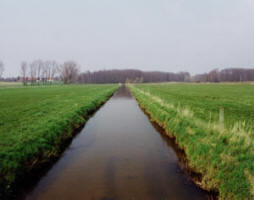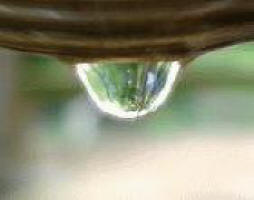 UAE: Waste water treatment can save energy
UAE: Waste water treatment can save energy
Scientists are examining a new, energy-saving way to treat waste water using
bacteria.
The project at the Masdar Institute of Science and Technology uses microbial fuel cells to
manipulate bacteria in the water, effectively cleaning it.
Dr Farrukh Ahmad, an assistant professor who is leading the research, said a pilot project could
be under way within two years.
Although treatment technologies in use also rely on live bacteria to break down waste, microbial
fuel cells, when used on a large scale, can offer a lower-energy alternative. In addition, they offer
the possibility of combining other functions, such as the production of electricity or purification
of industrial waste water.
In addition to treating waste water, the technology can recover valuable salts from Abu Dhabi’s
highly saline groundwater.
“The idea is to have a small-footprint, dual-way process,” Dr Ahmad said.
The microbials work by sparking oxidation reduction reactions. These are the type of reactions
that help the body function, for example in food digestion. In industry, they are used to obtain
metals from ore or to produce fertilisers from ammonia.
“Generally, in nature you have oxidation and reduction reactions, and they are coupled,” Dr
Ahmad said. “In a microbial fuel cell, we decouple these reactions.”
When the bacteria breaks down the waste water it produces microscopic particles with a negative
electric current, as well as hydrogen that combines with oxygen in air to produce water.
The energy released in this process could be used to produce electricity or to engineer further
chemical reactions that could be used to treat industrial waste water, removing dangerous and
common industrial pollutants such as nitrates and perchlorate, Dr Ahmad said.
Existing waste water treatment systems, such as activated sludge, also rely on bacteria to break
down the waste, but they need live bacteria to keep reproducing. This means the process is
energy intensive, as it requires a steady supply of oxygen to keep the bacteria alive.
No oxygen was used in microbial fuel cells, making them a “low-energy solution”, he said.
“In microbial fuel cells, we are keeping the number of bacteria the same,” said Dr Ahmad.
“Here, you are not getting more biomass, you are getting extra electron transfer.”
Although research into microbial fuel cells has been going on since as early as the 1960s, during
the past decade interest in it has intensified. Since 2005, the number of citations in scientific
literature has been doubling year-on-year, Dr Ahmad said.
In Australia and the United States, scientists are making the first attempt to get the technology
out of the lab and into the real world. Since 2008, the University of Queensland, in Australia, has
operated a small pilot plant to process a brewery’s waste water. Besides cleaning up the effluent,
the plant also produces caustic soda. The university has formed a company, Bilexys, to
commercialise the technology developed during the project.
Scientists at Pennsylvania State University in the US are also running pilot trial experiments.
Although Dr Ahmad’s prototypes are small – one is the size of a Rubik cube, another one
resembles a small pitcher – his team could be ready to run a pilot project in Abu Dhabi in the
next year or two, he said.
One challenge to scaling up the technology has to do with the materials used to produce some of
the parts, currently made of platinum. While this was possible in a laboratory setting, it became
expensive on larger scales, he said.
Dr Ahmad is also collaborating with scientists at the Massachusetts Institute of Technology to
use microbial fuel cells to produce energy from cellulose. This was a lot more challenging than
waste water applications as cellulose was harder to break down to simpler molecules, he said.
But it could have great benefits.
Cellulose is a natural polymer found in plants and trees and, most important, in paper, cardboard
and other types of packaging waste. “There is a lot of packaging waste that goes to landfill,” Dr
Ahmad said.
| Contact information | n/a |
|---|---|
| News type | Inbrief |
| File link |
http://www.middleeastelectricity.com/Global/Middle_East_Electricity/pdf/Wastewatertreatmentcansaveenergy24Jul10TN.pdf |
| Source of information | http://www.middleeastelectricity.com/Industry-News/Water/ |
| Keyword(s) | Waste water treatment |
| Subject(s) | ANALYSIS AND TESTS , CHARACTERISTICAL PARAMETERS OF WATERS AND SLUDGES , DRINKING WATER , DRINKING WATER AND SANITATION : COMMON PROCESSES OF PURIFICATION AND TREATMENT , ENERGY , INDUSTRY , INFRASTRUCTURES , PREVENTION AND NUISANCES POLLUTION , SANITATION -STRICT PURIFICATION PROCESSES , SLUDGES |
| Geographical coverage | United Arab Emirates, |
| News date | 26/08/2010 |
| Working language(s) | ENGLISH |
 you are not logged in
you are not logged in





